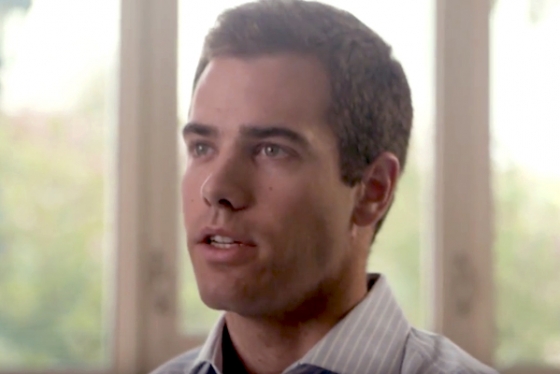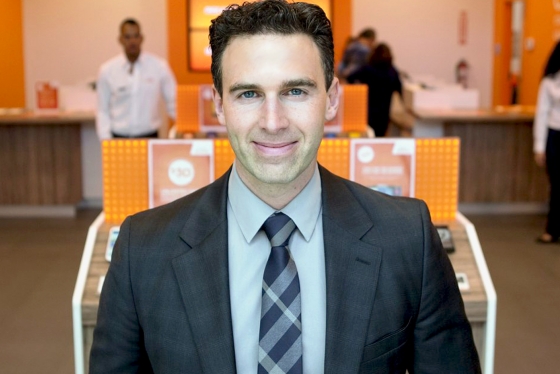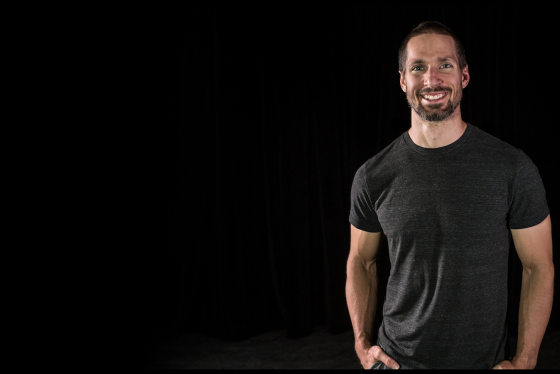Faculty of Applied Science & Engineering
Natalie Panek
MASC 2009, Aerospace Science & Engineering
When Natalie Panek was growing up in Calgary she loved the outdoors, loved working with her hands, including helping her dad change the oil in the car.
Panek still has that sense of wonderment, and that, combined with her intellectual excellence, has driven people to call her the Roberta Bondar of her generation.
While she has aspirations to be an astronaut like Bondar, she knows that is a long-term goal, and today is working on some fascinating new technology at MDA’s Robotics and Automation division in Brampton.
Panek (Master of Applied Science and Engineering, 2009) studied mechanical engineering at the University of Calgary “knowing in the back of my mind I wanted to pursue aerospace engineering,” and realized U of T was the best place to do her graduate work.
“My long term goal is to be an astronaut,” she said in an interview. “I guess everything that I have done in my life has been with that goal in mind. I try to strategically undertake experiences I think will help me get there.”
She was drawn to the idea of doing an experimental masters, and joined Dr. Omer Gulder’s combustion group at U of T’s Institute for Aerospace Studies.
After her first year at the institute she won an internship at NASA’s Goddard Space Centre near Washington, D.C. for the summer of 2008. “I basically set up my experiments before I left (campus) and came back to run my experiments. I am so appreciative that Dr. Gulder gave me the opportunity and time to do that. The internship was a life-changing, once-in- a-lifetime experience.”
The “cool thing about the aerospace program at U of T is that it is off campus (at Dufferin and Steeles). It was like a small community in itself, where you have the opportunity to interact with a very diverse group of people studying diverse initiatives.”
After graduating in 2009 she attended a space studies program at a NASA’s Ames research centre in California. “It was a really fascinating experience,” she said. The project she worked on was about a mission to Mars.
“We were trying to see if we could send humans to Mars to live under the surface in caves instead of on top of the surface. It was very intriguing to study if humans could live in a subterranean environment for prolonged periods of time.”
Today, as a missions systems engineer at MDA, she is working on robotic technology that should have more short-term and practical benefits than a mission to Mars.
Canada delivered the first Canadarm to the U.S. space program in the 1980s to be used on the space shuttle orbiters to deploy, maneuver, and capture payloads. “We are taking the legacy of the Canadarm and translating it into the next generation of space robotics,” she said.
MDA is working on “satellite servicing,” she said. Using a car analogy, Panek said “what if you bought a car and were never able to put gas in it or change a tire. It becomes junk on the highway.”
There are thousands of satellites in space with very limited options to fix them in orbit, hence becoming “space junk”. What if you could launch a robotic arm into space on a service vehicle, similar to a tow-truck, then dock with the broken down satellite or one that needs to be refueled, and perform the servicing tasks.”
She said “it is really about promoting sustainable exploration, and trying to be more responsible for the hardware we are launching into space.”
At 30, Panek knows that becoming an astronaut could be quite a few years away. “It’s a long term goal but what I am doing now is giving me opportunities for life-long learning.
Panek, named one of Canada’s Most Powerful Women in 2014, is a vocal advocate for getting more visibility and recognition for women working in science including putting “more intelligent programming and role models in the media to show young girls that technological careers are attainable by anyone.”
Published August 12, 2015.





